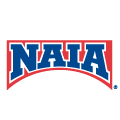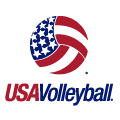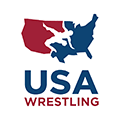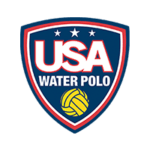How to Get Recruited for Men’s College Lacrosse
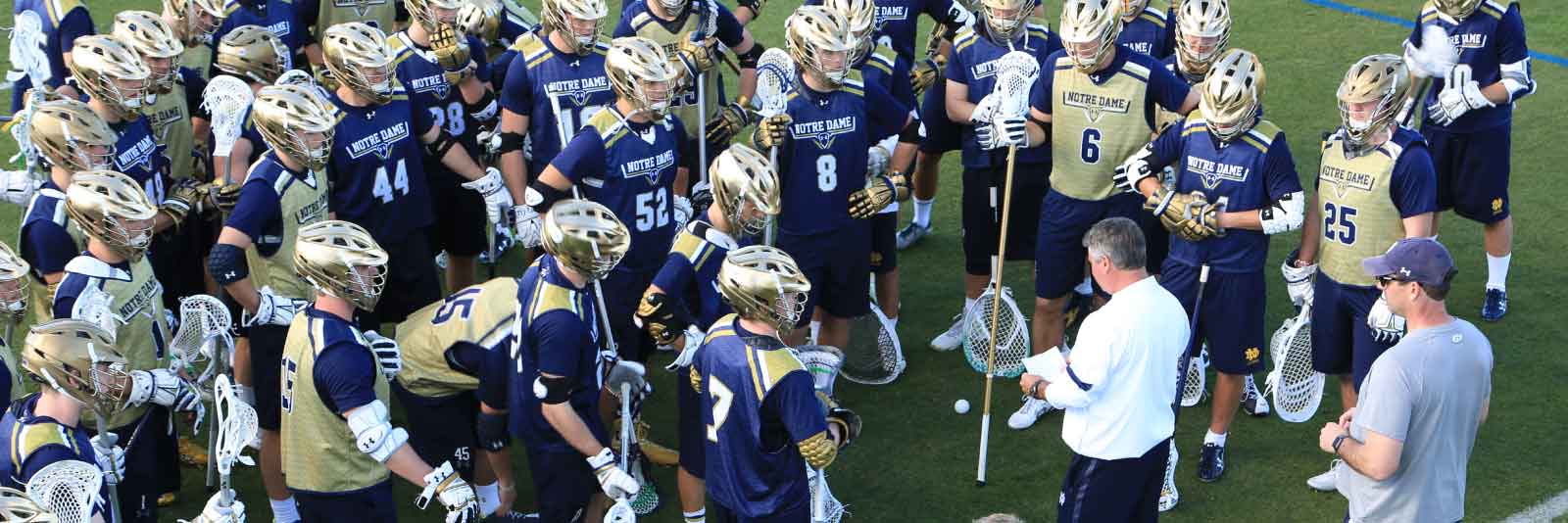
The reality of NCAA men’s lacrosse is that the majority of programs are Division 3, making competition for a spot on a Division 1 or Division 2 team fierce, but not impossible. It’s not enough to be a great athlete on the field. College coaches are looking to add talent to the roster that excels both on the field and in the classroom. If a student-athlete wants to be recruited for men’s college lacrosse, they’ll need to be the top talent on the field, have high marks in the classroom and demonstrate good character.
Athletes with these skills and qualities, who expertly market themselves to college coaches throughout high school, have the best chance of scoring a roster spot, and even a scholarship, at the Division 1 or Division 2 level. This section will serve as a guide, helping student-athletes and their families understand how to get recruited for college lacrosse.
Quick Links
Lacrosse recruiting timeline for men’s college lacrosse recruits
The NCAA D1 and D2 college coaches follow a strict lacrosse recruiting timeline that does not allow them to contact student-athletes prior to September 1 of their junior year, but that doesn’t mean student-athletes can begin to market themselves. There are currently no restrictions on when athletes can start reaching out to college coaches. Student-athletes should begin by researching and building a list of prospective schools, as early as freshman year and send introduction letters to the coach at those programs. While the NCAA recruiting rules prohibit coaches from responding to student-athletes before September 1 of their junior year, this is a great first step for a student-athlete to express interest and get on a coach’s radar.
Between freshman year and September 1 of their junior year, student-athletes need to prepare for the official recruiting process. This means filming highlight tape, scheduling unofficial college visits, playing for a club lacrosse team, filling out questionnaires and continuing to research schools and build relationships with coaches. When the time comes for college coaches to begin reaching out, the student-athlete will have already built out their recruiting profile and can focus on relationship building and timely communication with coaches.
How good do you have to be to play college lacrosse?
Regardless of division, college coaches look for three core elements on the field when recruiting student-athletes: versatility, lacrosse IQ and athleticism. Off the field, coaches look for student-athletes with high academic standing who are able to balance athletics and academics successfully. Of the 113,313 male US high school lacrosse players, those who demonstrate all three elements and academic success are most likely to catch the attention of coaches at their prospective schools. View the men’s lacrosse recruiting guidelines for additional information on how coaches evaluate lacrosse players.
The importance of lacrosse recruiting camps
Lacrosse recruiting camps are an opportunity for student-athletes to be challenged by talent across the country, sharpen their skills and, most importantly, compete in front of college coaches. Recruiting camps set the stage for student-athletes to be evaluated by college coaches at programs they are interested in pursuing a roster spot. These opportunities are especially important for student-athletes competing outside the Northeastern region, who have limited access and exposure to the NCAA lacrosse programs.
Find men’s lacrosse camps here.
Lacrosse recruiting video tips
A student-athlete’s recruiting profile is not complete without a well-made highlights video. This 3 to 4-minute video allows athletes to introduce themselves and college coaches the chance to create an unbiased evaluation of the athlete’s skills. Here are some lacrosse recruiting video tips that every student-athlete should follow:
- Footage should be from varsity or club games.
- Shoot from an elevated perspective, such as the stands or the press box.
- Make sure the viewer can see the jersey numbers, foot skills, and technical ability, but the shot is wide enough to capture the progression of the play and multiple players
- Use a tripod for stability and ease.
Get more information about creating a lacrosse recruiting video here.
Finding potential colleges
When looking for the right college fit, student-athletes first need to understand the difference between each division level. Understanding each division gives student-athletes an idea of where they fit in terms of their athletic skills, GPA and ACT/SAT test scores and financial requirements. Once an athlete has a good grasp of each division and which is the best fit for them, they can begin searching for potential colleges. NCSA has developed a Power Ranking system to help student-athletes in their search. NCSA Power Rankings identify the best colleges using a number of factors that are important to student-athletes, including cost, academics, size, location and athletics.
How to get discovered by college coaches
Participating in lacrosse camps, competing at tournaments and building out an online profile with strong highlight video and stats are all necessary elements of the recruiting process, but they don’t guarantee to connect athletes to a college coach. To get discovered by college coaches, student-athletes need to be proactive. First, create a list of prospective schools that are realistic based on the athlete’s skill level and academics. Then, it’s time to start making calls and sending emails to coaches that run the lacrosse program at those schools. College coaches want athletes who take initiative and show that they truly want a spot on the roster. After you’ve introduced yourself to college coaches, talk to your high school and/or club coach to see how they can help you further develop a relationship with those coaches.
How to write a recruiting letter to a lacrosse coach
Student-athletes cannot rely on camps, tournaments and high school games to get discovered by college coaches. While these are great opportunities for exposure, to get discovered by a college coach, student-athletes should start by initiating the conversation with an introductory email. What should student-athletes say in that first letter? First, start with an attention-grabbing subject line that will stand out from the other prospect emails. Consider using numbers and stats, such as your graduation year, position, height and weight, ACT score, etc.
Now, for the email copy. The email should lead with a statement on why the student-athlete is interested in this particular program or something about the team that interests them. Next, it’s time to turn the focus to the student-athlete and what makes them a good fit for the program.
Your general information: Name, graduation year, high school and club name
Academics: GPA, test scores
Athletics: sport specific stats and relevant measurables
Contact information: phone number and email, as well as your club and high school coach contact info
The goal of this letter is to kickstart the student-athlete and coach relationship, therefore end with clear next steps. Either mention a specific time the student-athlete plans to call the coach or invite them to a tournament or game where they’ll be able to evaluate the athlete’s skills.
The role of high school and club coaches
High school and club coaches can play a larger role than just developing a student-athletes skillset. These coaches can play a key role in the college recruiting process. Below is a list of three ways a student-athlete’s coach can help them in the recruiting process.
Create connections
High school and club coaches, especially those that have been coaching for a while, have strong relationships with college coaches and programs. This makes these coaches a great resource to introduce student-athletes to college coaches on their list of target schools and kickstart relationship building.
Provide feedback
It can be difficult to determine what division a student-athlete is qualified to play in at the college level. High school and club coaches can be a great resource for honest feedback of an athlete’s skillset to help make this decision. Club coaches watching athletes play throughout the year and spend much of that time assessing their talent and work ethic. Using this knowledge and their understanding of the various levels of competition at the college level, coaches can help athletes identify a realistic division level, what to include in a highlight video and where they need to improve.
Recommendations
College coaches often contact high school or club coaches to learn more about a recruit. How a student-athlete responds to questions about character, attitude, work ethic and talent can have a huge impact on the athlete’s recruitment. Student-athletes who are being recruited by college coaches should give their high school and club coach a heads-up that they may receive a call for a recommendation and provide any information the coach may need to give a complete assessment.
Types of Division 1 and 2 lacrosse offers
Lacrosse is an “equivalency sport”, which means college coaches are granted a pool of scholarship money that can be awarded to members of their team however the coach would like to divide it. This makes full-ride scholarships extremely rare. Student-athletes that receive a scholarship are typically awarded a partial scholarship that can cover tuition, books, room and board, and other fees, depending on the size of the offer.
Though, not all student-athletes will receive a scholarship. College coaches can also give athletes a preferred walk-on offer. College coaches offer preferred walk-ons to athletes they have been recruiting but to whom they can’t offer any financial assistance. While there is no guarantee, preferred walk-ons have the opportunity to earn a scholarship after their first year.
Student-athletes who are not awarded a scholarship or a preferred walk-on offer can still make the roster as recruited walk-on. To make the team, athletes will need to attend walk-on tryouts and impress the coach enough to walk away with a roster spot.
What to expect at men’s college lacrosse walk-on tryouts
Student-athletes who lack the athletic skills needed to compete at the D1 level still have an opportunity to make the roster as a walk-on. College coaches are looking for student-athletes with ambition and drive, who will challenge the team’s top talent in practice and, ultimately, contribute to the team’s growth and success.
Walk-on tryouts are the student-athlete’s time to shine. Athletes should be bold, convincing, sportsman-like and unphased by any negative feedback from the coach. Parents should keep in mind that this is the student-athlete’s responsibility to build their case and convince a college coach that they deserve a walk-on spot, they are merely there for support.
What you should know about the national letter of intent men’s lacrosse
While not mandatory, the national letter of intent (NLI) is used at 657 NCAA Division 1 and Division 2 programs as a binding agreement between student-athletes and the institution to protect both parties. What does it mean to sign the NLI? Signing the NLI signifies a student has committed to one year at the university and is guaranteed an athletic scholarship for the first year. After a student-athlete signs an NLI, they can no longer be recruited by other schools. Signing the NLI does not guarantee the student will have a scholarship all four years. It is the school’s responsibility to let the athlete know if their scholarship will be renewed following their first year.
An NLI can only be signed during the designated signing period.
How to get recruited by a D1 college for lacrosse
Division 1 roster spots are at a premium. Student-athletes who are serious about being recruited by a Division 1 program must dedicate significant time to training. This means spending 10+ hours a week training, ideally with a strong club team led by a well-connected coach who can help athletes develop the skills college coaches are looking for at the Division 1 level. Student-athletes should create a recruiting profile, which college coaches can use to track an athlete’s growth and important stats.
After a student-athlete has built out their recruiting profile and researched their Division 1 options and determined which programs are on their prospective schools list, they should begin reaching out to college coaches. Begin with an introduction email to express interest in the program and get on the coach’s radar. Athletes can also engage with college coaches at showcases and prospect camps, where they’ll have the ability to demonstrate their skills.
While the student-athlete is focused on becoming a top tier lacrosse athlete, it’s important to not neglect academics. College coaches are looking for well-rounded athletes who will contribute to the team athletically, academically and culturally. Good academic standing and participation in extracurricular makes a high school athlete especially appealing to a college coach.

